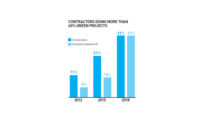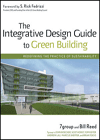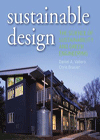New Research Reveals the Safety Hazards of Green Building
Identified Risk: A higher risk of falls and overexertion occurs from increased ladder time maintaining ductwork.
Suggested Mitigation: Using different materials for the prefabricated “caps” on the ends of the duct, such as a universal magnetic cap, may make installation less awkward and therefore quicker and easier. Also suggested was the off-site fabrication of ductwork for longer sections to decrease time spent on the ladder.
LEED Credit: Low-Emitting Materials—Adhesives/Sealants
Identified Risk: Oftentimes, “rework” is needed due to the lower quality low-emitting adhesives and sealants used. The added time spent at heights, performing overhead work and exposure to construction dust creates a heightened risk for workers.
Suggested Mitigation: Designers and contractors could work together to find available products that meet Rule #1168 while also standing up to expected temperatures and compatibility to other construction materials used. This would eliminate the need for added “rework.”
LEED Credit: Indoor Chemical and Pollutant Source Control
Identified Risk: Workers have a heightened risk to fall hazards due to overhead work and working at heights during piping and ductwork installation.
Suggested Mitigation: Designers could install HVAC systems under the floor so they’re easier to install and maintain.
LEED Credit: Controllability of Systems—Lighting
Identified Risk: Complex wiring associated with occupancy sensors and timing controls increase risk of electrical shock to workers. Additional time spent wiring these systems at heights increases the risk of falls.
Suggested Mitigation: Some elements of the systems could potentially be prefabricated, decreasing time spent working with the wires onsite. Designers might locate sensors at reachable heights rather than on ceilings to eliminate time spent of ladders.
LEED Credit: Daylight and Views: Daylight 75% of Spaces
Identified Risk: Large skylights, windows or atriums increase time spent working near large, exposed openings at great heights.
Suggested Mitigation: Designers could create a courtyard to meet the requirements or minimize the depth of the building as an alternative to atriums and skylights. If these elements are included, additional precautions could be taken, such as blocking off areas below overhead work, using equipment such as man lifts and scissor lifts when possible and using tie-offs and barriers near exposed openings.
Should the LEED framework be held responsible for safety issues? No, LEED is simply a tool used to measure and verify green building performance. There are other organizations that are...
Do we have a concern about new green building systems and the safety of our workers at Sellen Construction? Absolutely! Any time you initiate a new construction practice or building system, it introduces tradespeople to new situations and there is the potential for a higher risk of incident. For example, with the increased use of vegetated roofing systems, landscapers (not typically expected to work on roofs) are being asked to install roofing systems which in turn, creates the need for heightened safety protocols and worker education.
Sellen Sustainability, the national training and consulting arm of Sellen Construction, is currently working on a Safety & Health Investment Project (SHIP) grant through Renton Technical Colleges Construction Center of Excellence to be used across Washington State. Funded by the Department of Labor & Industry, the SHIP grant will result in the creation of an industry-specific instructional video and an 8 hour course focused on training safety professionals. The goal is to help them acquire a core understanding of sustainable construction practices and green building systems in order to develop appropriate safety protocols to reduce incident rates associated with hazards such as falling, being struck by an object and overexertion.
Our training does not use a LEED credit specific approach; rather, in developing curriculum, our focus has been on new green building systems and practices that have safety implications as these issues also often occur on non-LEED projects and most builders do not think about construction and or safety from a LEED credit perspective. Our curriculum also includes a section on how LEED and basic green building practices actually protect workers. For example, we have a company-wide approach to indoor air quality management that significantly reduces workers exposure to potential trip hazards and known toxins through sustainable housekeeping, source control, pathway interruption, and the use of low-emitting adhesives, paints and sealants.
Safety statistics are an important first step to help raise awareness about the importance of safety professional training related to new green building practices. As such, we are focused on creating behavior change to reduce injuries, while maintaining the integrity of the green building industry.
Yancy Wright
Director, Sellen Sustainability







